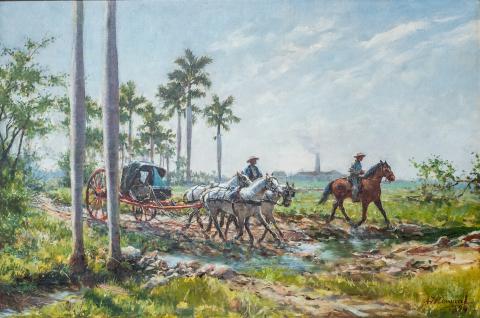
Ingenio con carruaje (Sugar mill with carriage)
Decades before the United States intervened in the third War of Cuban Independence (1895–98), the sugar market defined U.S.-Cuba relations. By the 1840s, nearly half of Cuban trade, including sugar and sugar machinery, depended directly on U.S. markets and manufacturers. By 1865, the U.S. firm Moses Taylor & Co., led by Moses Taylor and Percy Pyne, handled roughly one-fifth of the entire sugar trade between Cuba and the United States.
During the Ten Year’s War (1868–78), Taylor and Pyne supported Cuban insurgents with armaments and supplies, hoping to end Spanish rule and its limitations on the sugar industry. This painting, by Cuban artist Armando García Menocal, depicts bourgeois travelers in a horse-drawn carriage with an active sugar plantation in the background. The work was previously owned by Percy Pyne’s son, Percy Rivington Pyne II, and titled Ingenio con carroza (Sugar mill with chariot).